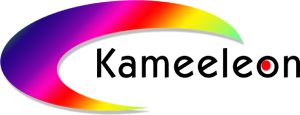Printing
Digital printing is the reproduction of digital images on a physical surface, such as common or photographic paper, cardboard, film, cloth, plastic, vinyl, magnets, or labels. All are possible with various desktop and industrial sized printers.
The process allows for blends of colour and tone within your designs instead of resorting to individual flat, solid colours. It’s made up by a combination of cyan, magenta, yellow and black inks (called CMYK), which combine to create the colours you need.
Here’s the thing – digital printing requires an image resolution of at least 300dpi (that’s dots per inch). Anything less than that will result in a poor quality print, and won’t be allowed.
Wanna know the difference between pad printing and screen printing – and what that means for your artwork – but don’t know where to start? Check out this handy guide to some of the most popular branding methods available in the industry…
Litho Printing
In much the same way as digital printing, litho printing gets full colour prints onto various physical surfaces. Litho printing enables you to personalise many desktop promotional products where large multiple runs are necessary.
Again, high resolution artwork is needed for this process (a minimum of 300dpi).

